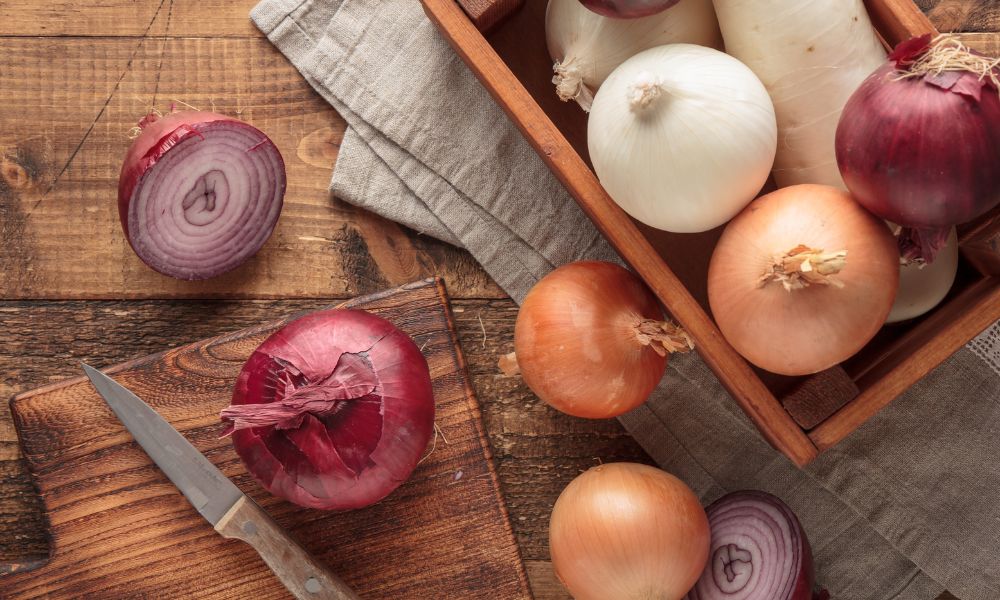Diversifying your selection of crops enhances your sales, adds more flavors to a plate, and offers numerous other benefits. Many fruits, veggies, and roots come in a range of variations, offering diversified flavors, purposes, and advantages. Onions are one of the most common produce items with many species to choose from. The differences between red, white, and yellow onions mean that these vegetables carry various benefits that your customers will appreciate and help you consider which types to sell.
All-Purpose Yellow
Yellow onions appear in numerous recipes. They make a great foundational ingredient, popular in creating flavorful tastes and bases like a mirepoix. Yellow onions are well known as the all-purpose onion. They work in any dish, absorb surrounding flavors, and add a touch of mild flavor into the mix. Unlike other onions, they offer a balanced mix of sweet and sharp tastes, making them well-rounded. Yellow onions offer multiple uses in the kitchen, from being an integral ingredient in soup bases to creating caramelized toppings and sides. Yellow onions’ all-purpose persona makes them a highly demanded commodity in markets.
Pungent and Tender White
Compared to yellow onions, white onions offer sharper, pungent, and mintier tastes. White and yellow onions commonly get interchanged, depending on how much flavor you want to bring to the plate. The difference between white and yellow onions stems from their texture, despite the white onion being used similarly to the yellow onion. They are tender when cooked and crispier when raw. They are the onion of choice for garnishes, salsa, and dishes like pasta salads and pico de gallo.
Colorful, Raw, and Flavorful Red
Red onions possess the most flavor among all three onion variations. They typically are eaten raw, adding a pungent, spicy taste to salads and burgers. Like white onions, red onions have a crispy texture, adding a satisfying crunch to dishes. Aside from using them raw, many people use red onions to create a spicy pickled side and condiment. As a bonus, red onions contain rich antioxidants, making them one of the best onions for health benefits and attracting many healthy lifestyle enthusiasts. When considering red versus yellow onions, red onions are typically better for pickling and grilling while offering a nice touch and extra crunch to a dish such as salad.
The differences between red, white, and yellow onions provide you with three distinct hot commodities to sell. Each onion offers unique benefits, providing people with different cooking and eating experiences to explore. Adding each of these onions to your market inventory expands your customer outreach and helps provide people with various flavors to play with in the kitchen. Before hitting the markets with your onions, don’t forget to check out our onion bags for sale to package, store, and transport your onions. Call us at (800) 892-2004 or visit our contact page and we’ll answer any questions you have.
